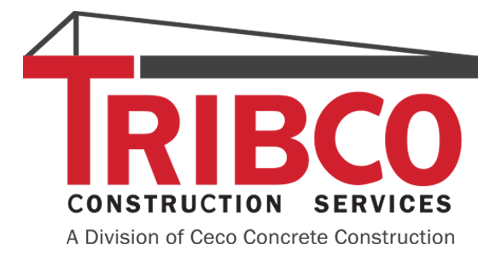The following tells the story of how Ceco Concrete Construction grew from one man’s great idea into a nationwide leader in cast-in-place concrete construction, performing more than 200 projects representing 20 million square feet each year.
In 1912, 26-year-old mechanical engineer C. Louis Meyer had a revolutionary idea and a dream of growth. That year, Meyer founded the Concrete Engineering Company in Omaha, Nebraska, and began more than 100 years of outstanding industry leadership in concrete construction.
In the early days, Meyer’s young company was strictly a sales agent for fabricated reinforcing bar and clay tile used in the construction of reinforced concrete buildings. But Meyer had an idea to discover a more efficient concrete construction system using steel forms that could be removed and reused over and over again in place of the wood and tile traditionally left in the structure. The Meyer Steelform construction system made Meyer’s dreams for Ceco a reality.
Architects and owners were intrigued by this new concrete construction method, yet Meyer and his six-person staff had to prove the system’s efficiency and worth to them by redesigning projects, estimating savings and marketing their successes. Ceco attracted more attention and ultimately contracts. Meyer decided to fabricate the reinforcing steel himself and sell the steelform service as a complete package.
After a successful first decade, Ceco opened offices around the country, developed new product lines and created more jobs. There was product diversification as well. Ceco expanded into galvanized sheet steel building materials and other products for the construction industry.
In 1934, Ceco purchased die and manufacturing equipment for steel windows and became involved with engineering and fabricating steel joists. As Ceco expanded, it drew attention as a key subcontractor in the 1930s. The Golden Gate Bridge, Lincoln Tunnel and the Cleveland Union Terminal were all projects that elevated Ceco’s reputation.
Ceco joined the national defense effort in the early 1940s, dedicating nearly all of its manufacturing capabilities to wartime production. Among the many crucial products manufactured by Ceco for its country was the Bailey Bridge. Ceco also produced more than 100,000 tons of steel mats that were used for Allied aircraft landings on remote islands. Ceco made crow’s nests, ships ladders and steel ship doors for the Maritime Commission.
Ceco grew more in the 1950s than in any other decade. Recruiting began at America’s top universities in a concerted effort to seek the nation’s finest engineering and business talent. Ceco became a raw materials producer in the 50s when it built a steel mill in Lemont, Illinois. The company expanded its facilities to more than 20 warehouses and 24 offices across the country.
Growth through acquisitions marked the 1960s for Ceco Concrete Construction as expansion continued both in new products and in new markets. In 1964, Ceco purchased Mitchell Engineering, a leading producer of pre-engineered metal buildings. To broaden its product line into the overhead door market, Ceco acquired Windsor Door Company in 1969. Entry into markets other than steel influenced Ceco to drop the “steel products” from its name.
The 1970s marked a decade of re-evaluation for Ceco. In 1970, the company phased out its window business. The construction industry began experiencing a severe recession in 1975 and by 1977, Ceco started to discontinue its steelmaking operations. In the late 70s, the concrete construction division broadened its scope of work to include vertical forming.
While the 1970s was a decade of reassessment, the 1980s was one of transition for Ceco. The company divested itself of its two remaining steel mills and many of the operations acquired during the previous two decades. After more than 25 years of being publicly held, Ceco returned to private ownership. Despite another recession in the late 80s, the concrete division continued to expand into full service structural concrete construction subcontracting from coast to coast.
During the 1990s, Ceco divested itself from its door products and pre-engineered metal building acquisitions. The company focused on strengthening its reputation as the leader in concrete formwork services and as an innovator of safety systems for the concrete construction industry. Since 2000, Ceco has made acquisitions that have broadened and expanded the company’s experience and capabilities in all aspects of cast-in-place concrete construction.
In 1995, The Heico Companies acquired Ceco Concrete Construction, which continues to thrive to this day. Since the acquisition, growth has since been achieved through expanding the scope with trusted clients rather than geography. Today, Ceco’s services provide a complete concrete structure with the materials and labor in a turnkey manner, including structural design support. This extension of scope beyond formwork services have been client and market driven. As a company proven “to do what they say,” most projects are with repeat clients.
For more than 100 years, Ceco has earned a reputation as an innovative industry leader in concrete construction. From C. Louis Meyer’s game-changing steel forms to Ceco’s industry-adopted Fall Arrest System, the company constantly seeks new ways to perform work to better serve clients. As we look into the future at the next 100 years, we are excited to collaborate with industry partners to develop new solutions and better ways to deliver to the owner the most value possible. With solid corporate structure and financial backing, design professionals in house and significant field experience and expertise, Ceco’s future is as solid as concrete.
 US Dollars
US Dollars


